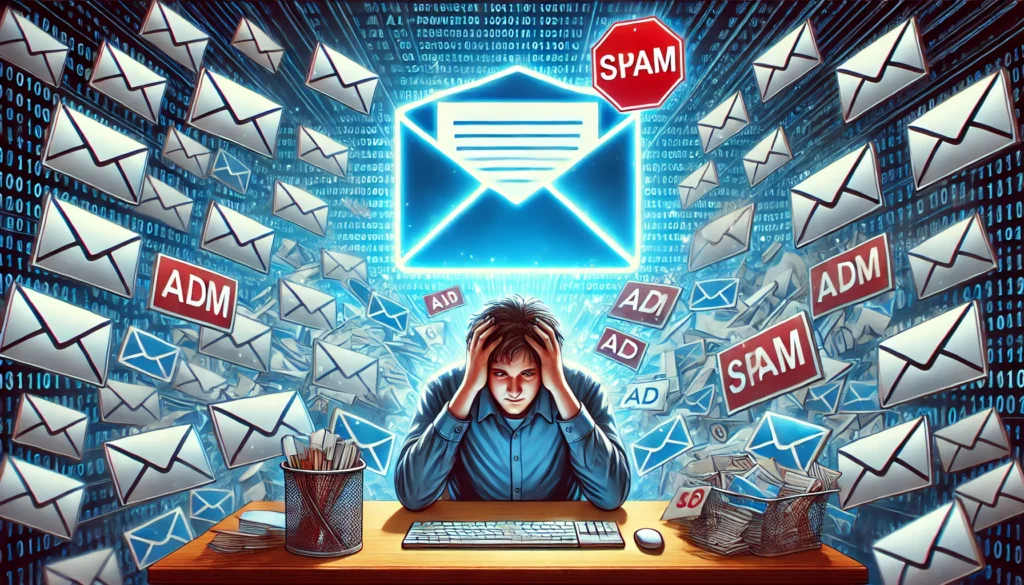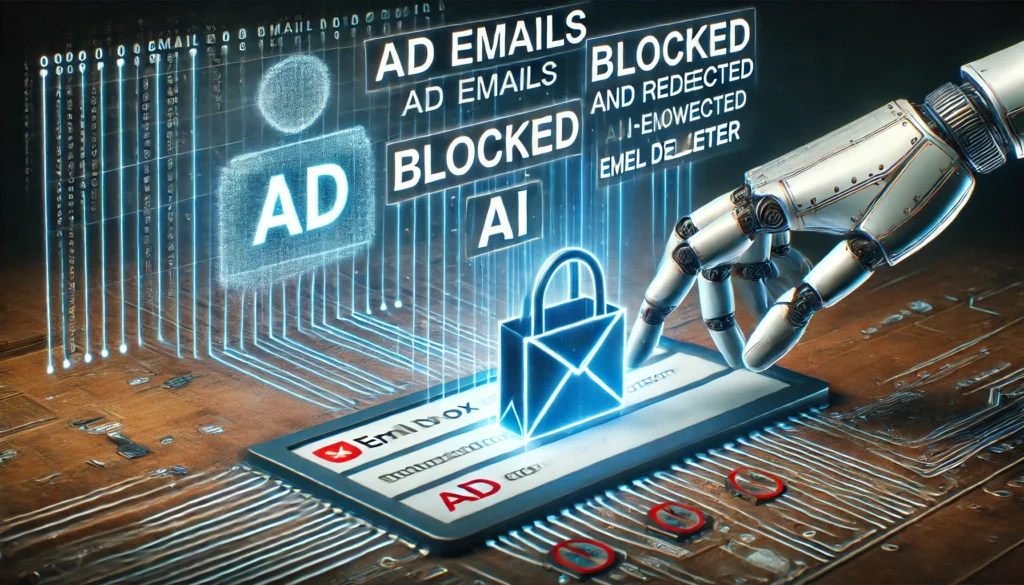In the digital age, email serves as a vital communication channel. From newsletters and promotional content to personal and professional correspondence, the inbox is a bustling hub of activity. Blocking emails is a method used to prevent unwanted messages from reaching your inbox. But what exactly happens when you block an email?
You may also like: Top Email Deleters for Inbox Management
The Mechanics of Email Blocking
Blocking an email address essentially instructs your email client to disregard messages from a specific sender. It’s akin to placing a virtual barrier that prevents unwanted correspondence from cluttering your inbox. The blocking process varies across different email platforms, but the fundamental principle remains the same: to eliminate or redirect undesired emails.
In most email clients, the process involves creating a rule or filter that automatically moves messages from the blocked sender to a different folder or deletes them outright. This automation frees up time and mental energy, allowing users to focus on more important tasks. Some platforms also offer the option to report blocked emails as spam, contributing to broader efforts to combat unwanted digital communication.
Different Methods of Blocking
While the basic concept of blocking remains consistent, the methods by which users can block emails differ from one platform to another. Some platforms provide a straightforward “block” option directly within the email client, while others require users to manually set up filters or rules. Understanding these differences is crucial for effectively managing one’s inbox.
In addition to traditional blocking, some platforms offer advanced options such as blocking entire domains or customizing rules based on specific keywords within the email content. These features provide users with greater flexibility and control over their email experience, enabling them to tailor their inbox to suit their individual needs and preferences.
The Importance of Email Management
In the modern world, where digital communication is omnipresent, effective email management is essential for maintaining productivity and ensuring important messages aren’t lost amidst the clutter. Blocking emails plays a significant role in this process, serving as a tool to streamline communication and minimize distractions.
Beyond simply blocking unwanted emails, users should consider implementing a comprehensive email management strategy. This includes regularly reviewing and updating blocking rules, utilizing tools such as folders and labels to organize messages, and establishing a routine for checking and responding to emails. By taking a proactive approach to email management, individuals can enhance their digital experience and reduce the stress associated with a constantly overflowing inbox.

What Happens to Blocked Emails?
When you block an email, it’s natural to wonder: what happens to blocked emails? Do they simply disappear into the digital ether, or are they redirected elsewhere? The answer lies in the configuration of your email settings and the platform you use.
The Fate of Blocked Emails
Blocked emails don’t simply vanish; their fate is determined by the settings configured within the email client. In many cases, these emails are automatically redirected to a spam or junk folder, where they can be reviewed at a later time if necessary. However, some clients may opt to delete blocked emails immediately, preventing them from ever cluttering the spam folder.
Understanding how your email client handles blocked emails is crucial for ensuring that important messages aren’t inadvertently lost. Users should familiarize themselves with their platform’s specific settings and make adjustments as needed to align with their preferences and communication needs.
The Importance of Regular Review
Even when emails are blocked and redirected, it’s important for users to periodically review their spam or junk folders. This practice helps ensure that no legitimate messages are mistakenly caught by filters and allows users to adjust their blocking rules if needed. Regular review is particularly important in professional settings, where missed communications can have significant consequences.
By establishing a routine for reviewing blocked emails, individuals can maintain control over their inbox and prevent valuable messages from slipping through the cracks. This proactive approach to email management contributes to a more efficient and effective communication strategy overall.
The Role of User Preferences
User preferences play a significant role in determining the fate of blocked emails. Many email clients offer customizable settings that allow users to decide how blocked emails should be handled, providing options such as sending them to spam, deleting them outright, or saving them in a separate folder.
These options empower users to tailor their email experience to suit their specific needs and preferences. By taking advantage of available customization features, individuals can create a more streamlined and personalized inbox, enhancing their overall digital communication experience.
Do Blocked Emails Go to Spam?
A common misconception is that blocked emails automatically end up in the spam folder. However, this isn’t always the case. The fate of blocked emails largely depends on the email client’s settings and the user’s preferences.
The Role of Spam Filters
Spam filters are designed to identify and redirect unsolicited or suspicious emails to the spam folder. When an email is blocked, it may bypass the spam filter altogether, preventing it from ever reaching your inbox or the spam folder. This means that blocked emails are often lost in cyberspace, with no trace left behind.
The effectiveness of spam filters varies across different platforms and can be influenced by factors such as the sender’s reputation and the content of the message. Users should be aware of these variables when configuring their spam settings to ensure that blocked emails are handled appropriately.
Configuring Spam Settings
To ensure blocked emails are appropriately managed, it’s crucial to configure your spam settings. Some email clients allow users to specify whether blocked emails should be sent to the spam folder or permanently deleted. Adjusting these settings provides greater control over the handling of unwanted emails.
In addition to basic spam settings, some platforms offer advanced options such as creating custom filters or setting specific criteria for identifying spam. These features enable users to refine their email management strategy and ensure that blocked emails are dealt with in a manner that aligns with their preferences.
The Balance Between Blocking and Filtering
While blocking and filtering serve similar purposes, they are distinct tools that can be used in conjunction to enhance email management. Blocking is a more direct approach, eliminating specific senders from the inbox, while filtering involves setting criteria for sorting and organizing incoming messages.
By understanding the differences and benefits of each approach, users can develop a comprehensive strategy for managing their email communication. This includes determining when to block versus when to filter and regularly reviewing settings to optimize the overall email experience.
The Implications of Blocking Someone on Gmail
Gmail, one of the most widely used email platforms, offers robust features for managing unwanted emails. Blocking someone on Gmail can have several consequences, both for the sender and the recipient.
Blocking in Gmail: What Happens
When you block someone on Gmail, their emails are automatically directed to the spam folder. This ensures that the blocked sender’s messages do not clutter your inbox, allowing you to maintain a clean and organized email environment. It’s a straightforward process that provides immediate relief from unwanted correspondence.
Gmail’s blocking feature is designed to be user-friendly, allowing individuals to easily block or unblock senders with just a few clicks. This simplicity makes it accessible to users of all technical abilities and encourages proactive management of unwanted emails.

Understanding the Sender’s Perspective
From the sender’s perspective, blocking can be perplexing. They may continue to send emails, unaware that their messages are being redirected to the recipient’s spam folder. This lack of feedback can lead to misunderstandings and frustration, particularly in professional settings where communication is key.
To mitigate these issues, it’s important for both senders and recipients to communicate openly and clarify any misunderstandings. In some cases, reaching out through alternative channels or confirming receipt of important messages can help bridge the communication gap caused by blocking.
Unblocking: A Reversal of Fortune
Unblocking a sender in Gmail is a simple process that reinstates their emails to your inbox. This flexibility allows users to revisit their blocking decisions and restore communication with previously blocked contacts. However, it’s essential to weigh the reasons for blocking before deciding to unblock a sender.
Before unblocking, users should consider whether the original issues that led to blocking have been resolved. In some cases, alternative solutions such as setting up filters or adjusting communication preferences may be more effective than unblocking. By carefully evaluating each situation, individuals can make informed decisions that support their overall communication strategy.
The Broader Impact of Email Blocking
Blocking emails is more than a mere organizational tactic; it has broader implications for digital communication and privacy.
Enhancing Digital Privacy
In an era where digital privacy is paramount, blocking emails serves as a protective measure against unsolicited and potentially harmful correspondence. By blocking emails from unknown or suspicious senders, individuals can safeguard their personal information and reduce the risk of phishing attacks.
The ability to block emails empowers users to take control of their digital security, providing peace of mind in an increasingly connected world. By proactively managing their inbox, individuals can minimize their exposure to potential threats and enhance their overall online safety.
Streamlining Communication
For professionals and individuals alike, maintaining a streamlined inbox is crucial for effective communication. Blocking emails helps declutter the inbox, allowing users to focus on important messages and respond promptly to correspondence that matters.
By reducing the noise and distractions associated with unwanted emails, individuals can improve their productivity and efficiency. A well-organized inbox facilitates better time management and enables users to prioritize tasks and responsibilities with greater ease.
The Psychological Impact
The psychological impact of a cluttered inbox should not be underestimated. Constant notifications and an overwhelming number of unread emails can contribute to digital stress. Blocking unwanted emails alleviates this burden, promoting a healthier digital environment and improving overall well-being.
By taking control of their inbox and reducing digital noise, individuals can create a more balanced and manageable communication experience. This sense of control can lead to increased focus, reduced stress, and a greater sense of satisfaction in both personal and professional spheres.
Future Implications and Trends
As technology evolves, so too does the landscape of digital communication. Understanding the future implications of email blocking is essential for adapting to emerging trends and technologies.
Advances in Email Filtering
With advancements in artificial intelligence and machine learning, email filtering systems are becoming increasingly sophisticated. Future developments may offer more nuanced approaches to blocking and filtering emails, providing users with enhanced control over their digital communication.
These advancements hold the potential to revolutionize the way emails are managed, offering personalized solutions that adapt to individual preferences and habits. By staying informed about these developments, users can take advantage of cutting-edge tools and strategies to optimize their email experience.
The Rise of Alternative Communication Channels
As email blocking becomes more prevalent, alternative communication channels are gaining traction. Messaging apps, social media platforms, and collaborative tools offer new avenues for communication, reducing reliance on traditional email systems.
These alternative channels provide users with additional options for staying connected and sharing information, often with enhanced features and capabilities. By exploring and adopting these new tools, individuals can diversify their communication strategies and adapt to the evolving digital landscape.

The Future of Email Management
The future of email management is likely to be shaped by ongoing technological advancements and changing user preferences. As digital communication continues to evolve, staying informed and adaptable will be key to maintaining effective communication in the digital age.
By embracing new tools and strategies, individuals can continue to optimize their email experience and ensure that their communication practices remain effective and relevant. This proactive approach to email management will be essential for navigating the challenges and opportunities of the future digital landscape.
Conclusion
Blocking emails is a powerful tool for managing digital communication, but it comes with its own set of consequences and considerations. By understanding the mechanics of email blocking and the implications of blocking someone on platforms like Gmail, users can make informed decisions that enhance their digital experience. As technology continues to evolve, staying abreast of trends and advancements in email management will be key to maintaining effective communication in the digital age.
Further Reading:
Blocked emails still coming through iPhone
The Complete Guide to Knowing If Someone Blocked Your Email
Important Note: The information contained in this article is for general informational purposes only, and should not be construed as health or medical advice, nor is it intended to diagnose, prevent, treat, or cure any disease or health condition. Before embarking on any diet, fitness regimen, or program of nutritional supplementation, it is advisable to consult your healthcare professional in order to determine its safety and probable efficacy in terms of your individual state of health.
Regarding Nutritional Supplements Or Other Non-Prescription Health Products: If any nutritional supplements or other non-prescription health products are mentioned in the foregoing article, any claims or statements made about them have not been evaluated by the U.S. Food and Drug Administration, and such nutritional supplements or other health products are not intended to diagnose, treat, cure, or prevent any disease.


